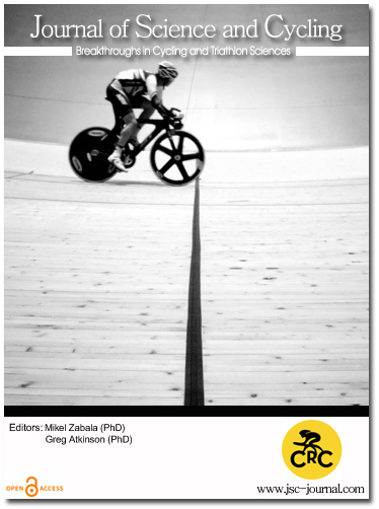Translating Uphill Cycling into a Head-Wind and Vice Versa.
Keywords:
Cycling, Power, Air Drag, Uphill, Head Wind, DraftingAbstract
Forces acting upon a biker, can be expressed in terms of power (in Watts). Such forces are for example (but not limited to) air-drag, rolling friction and changes in potential energy (due to gravity, when riding up a hill). Here I will specifically compare power related to air drag, with that related to cycling up a hill. This allows me to define the Incline-Equivalent Wind Velocity. The Incline-Equivalent Wind Velocity translates a slope of a mountain into a wind speed, such that overcoming both forces require the same power. Therefore, the Incline-Equivalent Wind Velocity can be interpreted as the velocity with which the wind has to push a rider such that the rider does not roll down a slope of a certain angle, and the net movement is zero. This can be used to recalculate mountain profiles into Incline-Equivalent Wind Velocity profiles and can express the effect of drafting in terms of a reduction in wind speed and incline, rather than power.
Downloads
Published
How to Cite
Issue
Section
Copyright (c) 2017 Journal of Science and Cycling

This work is licensed under a Creative Commons Attribution-NonCommercial 4.0 International License.
Authors contributing to Journal of Science and Cycling agree to publish their articles under a Creative Commons CC BY-NC-ND license, allowing third parties to copy and redistribute the material in any medium or format, and to remix, transform, and build upon the material, for any purpose, even commercially, under the condition that appropriate credit is given, that a link to the license is provided, and that you indicate if changes were made. You may do so in any reasonable manner, but not in any way that suggests the licensor endorses you or your use.
Authors retain copyright of their work, with first publication rights granted to Cycling Research Center.






